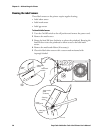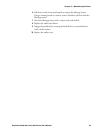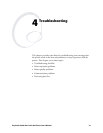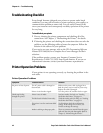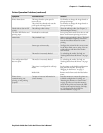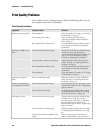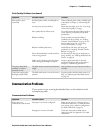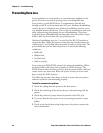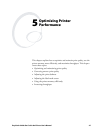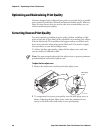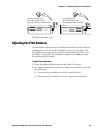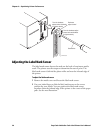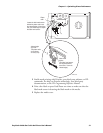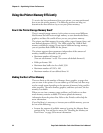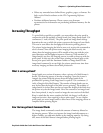Chapter 4— Troubleshooting Cd 39 Helvetica CondensedHelvetica
46 EasyCoder 3400e Bar Code Label Printer User’s Manual
Preventing Data Loss
Several problems can cause data loss or communication problems on the
printer. Data loss can result in printing errors or missing field data.
Your printer is a serial ASCII device. It communicates with the host
through an ASCII serial communication I/O port. Hardware handshaking
involves the use of a hardware wire. Software handshaking involves a two-
way datalink between the devices. The two devices communicate with each
other without losing data through the use of handshaking. The printer
sends both forms of handshaking simultaneously when the printer’s input
buffer is full. Any loss of data can cause printing errors.
Hardware handshaking uses pin 11 or pin 20 of the RS-232 interface to
control data flow. When the printer is using Intermec Standard protocol,
it holds pins 11 and 20 high when the printer is ready to receive data. The
printer holds the pins low when the printer is in one of the following
conditions:
• Buffer full
• Ribbon fault
• No label stock
• Label at strip bar
Your printer uses XON/XOFF protocol for software handshaking. When
the input buffer is full, the printer transmits an XOFF character. The
XOFF character alerts the host to the fact that the printer buffer is full and
cannot receive any more data. When the printer is ready to receive more
data, it sends the XON character.
The following procedure lists things to check to ensure that your printer
and host system are communicating properly.
To check for communication problems
1 Check the cabling from the printer to the host system.
2 Check the interfacing of the devices that are communicating with the
printer.
3 Check the printer for proper electrical operation of the I/O port.
4 Test to see that the host system is not overrunning the printer’s input
buffers.
5 Check to see that the data string being sent to the printer contains the
correct information.



